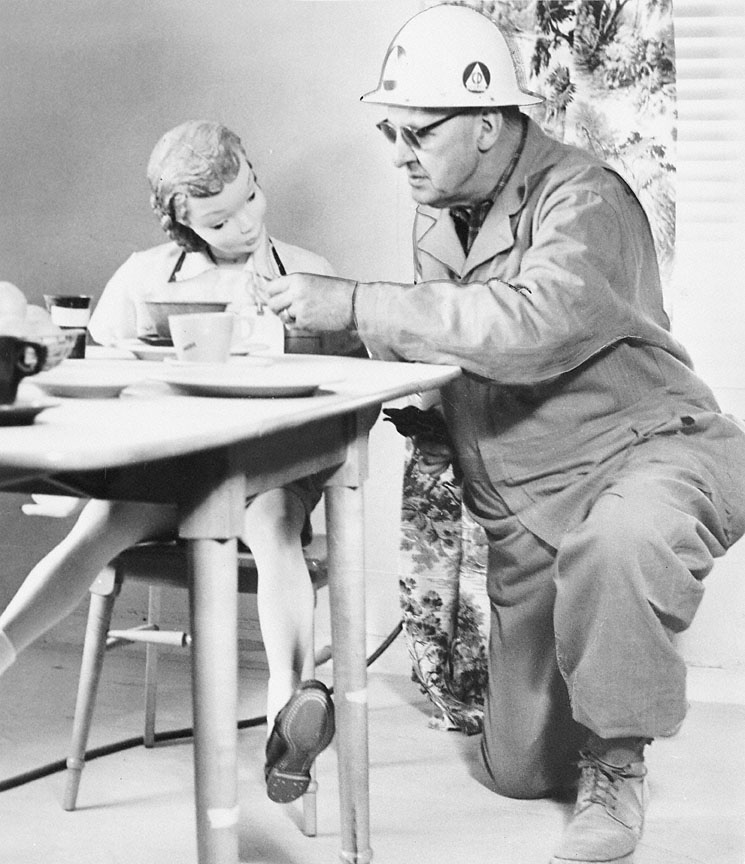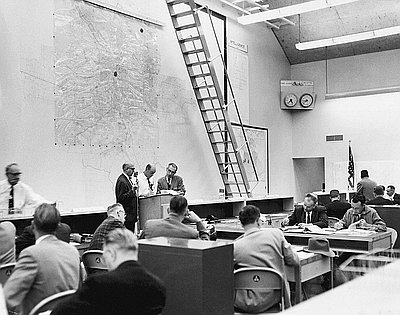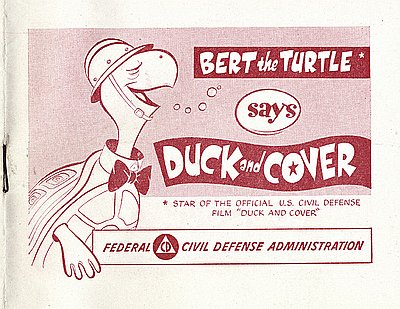This photograph originally appeared in the Oregon Journal, one week prior to the Federal Civil Defense Administration’s (FDCA) “Operation Cue,” a televised demonstration to test the effects of a nuclear blast on American homes and community services.
During the 1950s, the United States developed a dual strategy of containment and deterrence that formed the foundation of U.S.-Soviet relations for the duration of the Cold War. With each side threatening “massive retaliation” if attacked, much of the international posturing between the superpowers hinged on the readiness of each country’s citizenry to support their respective governments in the event of a nuclear war.
In the U.S., the Federal Civil Defense Act of 1951 created the Federal Civil Defense Administration to prepare the citizenry for the possibility of nuclear war. However, with the nation already engaged in a “hot war” in Korea, many of the nation’s legislators balked at the idea of funding homeland defense, arguing that money, manpower, and attention were needed overseas first. Additionally, conservatives and anti-communists were critical of proposed massive civil defense programs organized and funded by the federal government, since they too closely resembled the civil defense strategy of the Soviet Union. As a result, the FCDA promoted “self-help” strategies designed to save and perpetuate the “American way of life,” militarizing homes and communities in the process.
Americans were encouraged to build bomb shelters in their homes and communities, to evacuate cities, and if caught in the open to “duck and cover” in order to survive. But, as the arms race between the Soviets and the United States progressed, producing more and more powerful bombs, public confidence in the likelihood of post-nuclear survival waned. As a result, fewer civilians participated in FCDA-supported campaigns and groups.
Many scholars have argued that one challenge facing the FCDA was the need to elevate the public’s fear of nuclear attack sufficiently enough to spur them to act for their own defense, but not enough to cause panic or fatalism. Operation Cue offers a good example of how the FCDA tried to walk this fine line. By televising the results of a nuclear blast on mannequin-filled houses, they hoped to show the American public that it was indeed possible to survive a nuclear bomb blast—if sufficiently prepared. But, the bomb that was used was only half-again as powerful as the one dropped on Hiroshima. In comparison, as the media was then quick to point out, the hydrogen bombs being tested from 1952 through 1955 were approximately 500 times more powerful than the atom bombs used against Japan.
Further Reading:
McEnaney, Laura. Civil Defense Begins at Home: Militarization Meets Everyday Life in the Fifties. Princeton, N.J.: 2000.
Grossman, Andrew. Neither Dead nor Red: Civilian Defense and American Political Development during the Early Cold War. New York, N.Y., 2001.
Oakes, Guy. The Imaginary War: Civil Defense and American Cold War Culture. New York, N.Y., 1994.
Written by Joshua Binus, © Oregon Historical Society, 2004.


